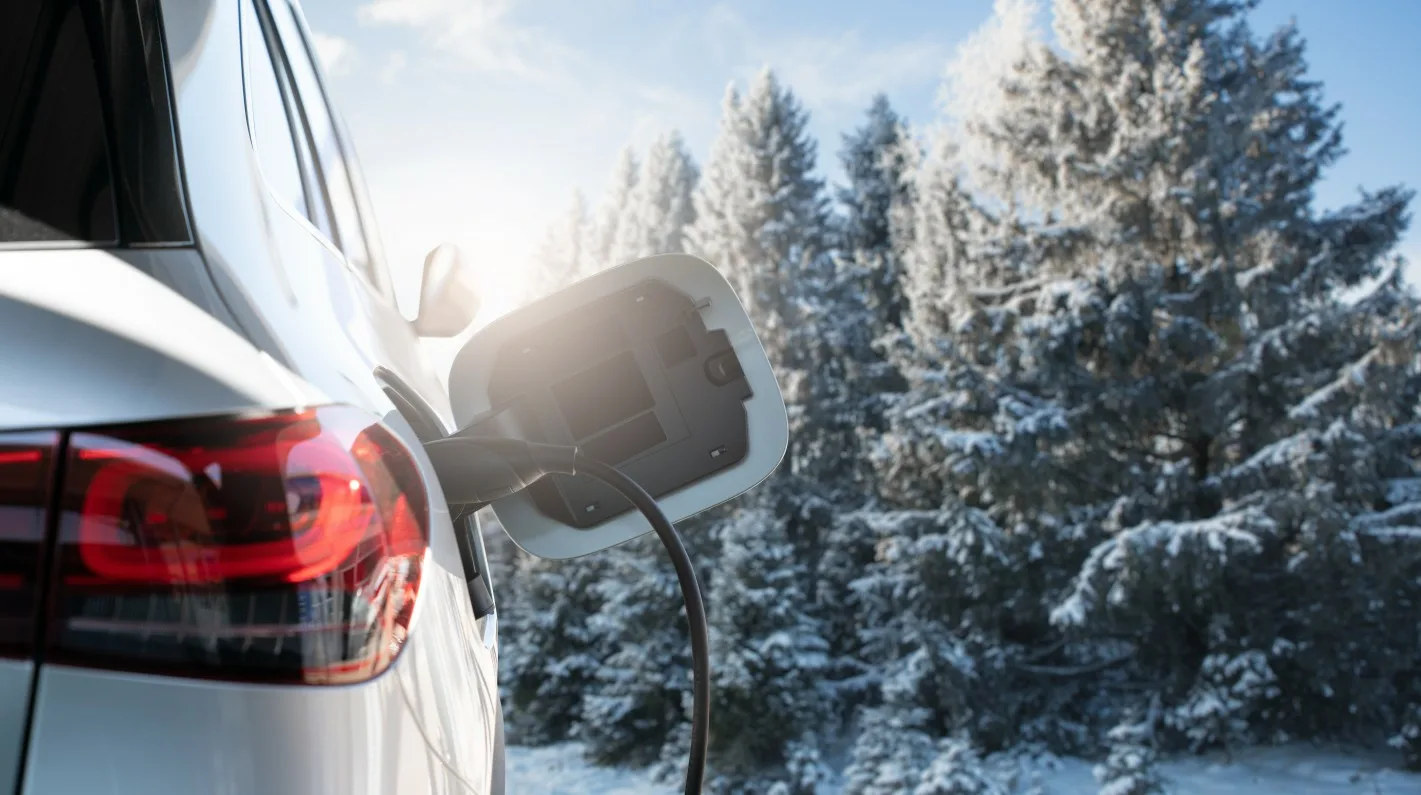
Winter is where festivities begin and we all look forward to a Christmas break seeing family and friends, however it can be a difficult time of year as well. Not only is the cold uncomfortable, but it’s expensive too. We spend more money on heating our homes, warm clothing and consumer electronics such as kettles and plug-in radiators.
Electric vehicles (EVs) have been revolutionary for the transportation sector, helping to reduce greenhouse emissions and our reliance on fossil fuels. They are however another example of victims to freezing temperatures. With an estimated 950,000 fully EVs on UK roads, many owners will want to keep them running optimally during winter months. As temperatures drop and the frost rolls in, it’s important to take extra care of EVs to ensure they remain reliable and safe to drive throughout the winter season.
Impact of Cold Temperatures
Cold temperatures during winter months can have a significant impact on the performance and efficiency of EVs. One of the main concerns is how they impact EV batteries. Freezing temperatures may reduce the range of an EV by up to a third, as they slow down the chemical reactions within the battery, causing a noticeable decrease in its capacity. An EV that typically travels 200 miles in warm weather might only manage around 140 miles in cold conditions—a stark 30% decrease in range.
The electrolyte fluid within the battery becomes thicker in cold weather, making it harder for the ions to move between the electrodes. Reduced ion movement within the battery prolongs charging times by up to 30% compared to warmer weather. This slower charging pace can disrupt regular schedules and necessitate planning for longer charging sessions. Additionally, the increased energy demand for auxiliary systems like cabin heating, defrosters, and wipers contributes to a further strain on the batteries.
Another potential issue that can arise from freezing temperatures is the reduced effectiveness of regenerative braking. Not in terms of stopping a vehicle, but how the energy is recaptured. It’s thought that lower temperatures reduce the efficiency of energy recapture during deceleration. The diminished energy being recovered unsurprisingly further impacts a batteries capacity and EV range.
General Winter Advice
Before discussing charging and range management, there are a couple of simple measures that can be taken to look after electric cars in winter. The first and simplest is to park or store your vehicle in a sheltered area. Keeping them covered and reducing exposure to freezing temperatures helps maintain lithium-ion battery performance and efficiency.
As well as this, keep battery usage to necessary-only, limiting unnecessary use. Minimising the use of battery-draining features such as heated seats and defrosters, which are naturally going to become more attractive in winter, can help reduce the load on the battery itself. EV system software should also be kept up-to-date as new features may be introduced that even improve battery efficiency.
Effective & Safe Charging
The actual charging of electric cars in winter requires some additional considerations. Here are some tips to help you optimise your charging process:
1. Use a dedicated charging point: Charging your EV at a dedicated charging point, preferably in a sheltered area, can help maintain optimal charging speeds and protect your vehicle from harsh weather conditions.
2. Charge smart: If you have the option, try to charge your EV during off-peak hours when the grid demand is lower. Furthermore, avoid deep discharges, where dipping below 20% state-of-charge can damage the battery cells (exacerbated in colder temperatures).
Extending EV Range In Winter
Range anxiety, especially for new EV owners, can affect those travelling long distances in cold, dark winter months. By extending the range of your EV battery, it can help alleviate symptoms and provide peace of mind. Here are two some effective strategies:
1. Drive in Eco mode: Most EVs offer an Eco mode that optimises energy consumption. Engaging this mode can help extend your range by limiting power output and reducing energy wastage.
3. Utilise regenerative braking: Take advantage of regenerative braking by anticipating stops and allowing the car to slow down naturally. This helps convert kinetic energy into electrical energy, extending your range in the process.
3. Plan your routes and charging stops: Before embarking on a long journey, plan your routes and identify charging stations along the way. This will ensure you have sufficient charging options to reach your destination, without straining the battery.
Conclusion
As the festive season approaches and you prepare to drive home for Christmas, it’s important to take proper care of electric cars in winter. By following the tips outlined in this article, you can help your EV to perform optimally, maintain its battery health, and provide you with a safe journey. At Elmelin we specialise in battery insulation for EVs, working with the automotive sector to deliver innovative solutions that improve EV battery performance, safety and lifespan. If you’d like to find out more about the work we do or how we can help you, contact us and a member of our team will be in touch.
